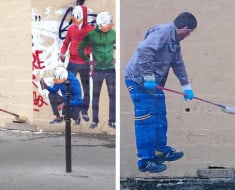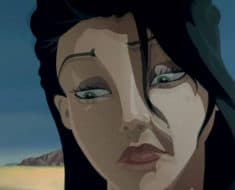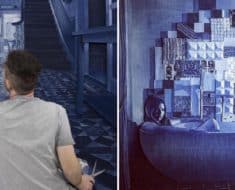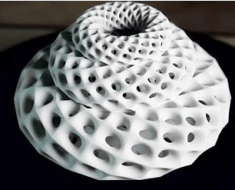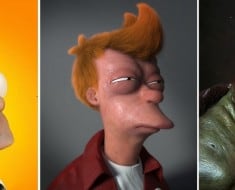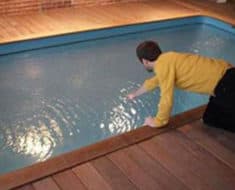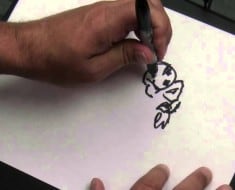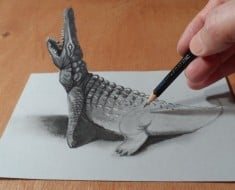For centuries, artistic skill was determined by rendition. For instance, a portrait that captured every line in the subject’s face was considered a masterpiece. As time went on, though, certain movements came along that challenged this definition of art.
One such movement was called surrealism and it came about in the 20th century. This avant-garde movement was meant to focus on the creativity of the subconscious mind. This typically meant that odd shapes and lines were used. The style is so unique, it’s worth considering the artist behind each surrealism painting.
1. Lajos Vajda

Lajos Vajda was a Hungarian painter that lived from 1908 to 1941. He was trained as an artist at the Hungarian Academy of Fine Arts and this was where he was first introduced to both surrealism and cubism. By the end of his life, Vajda self-identified strongly with the avant-garde movement.
His paintings came from a variety of inspirations such as a combination of religions, folk art, and architecture. Obviously, these were interspersed with surrealist techniques. Interestingly, some of his work near the end of his life was darker and some have referred to them as foreshadowing for the coming World War II.
The mark he left behind was obvious and can be seen in organizations such as the Vajda Lajos Studio and the Vajda Lajos Museum located in Szentendre, Hungary.
2. Vera Willoughby
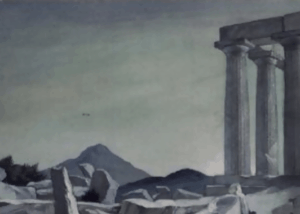
Vera Willoughby, who sometimes went by the name Vera Petrovna, is another Hungarian artist. She also moved outside of the confines of Hungary to complete her artistic education at the Slade School of Fine Art in London. This education included a careful study of cubism and art deco styles.
Willoughby was actually more commonly referred to as an illustrator rather than an original painter at the time. This is because she did work for artistically stylized versions of literature just as The Odes of Horace, Pride and Prejudice, and series of love poems. Shen also earned money as a poster designer and through the design of souvenir figures. Her unique and oftentimes literary style carried over into almost every style of art she tried as can be seen in her painting The Oros, Aegina, pictured above.
3. Istvan Farkas
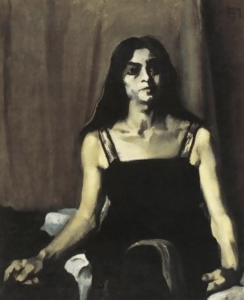
Another Hungarian individual, Istvan Farkas was a skilled painter and publisher with distinct surrealist tendencies. Unfortunately, Farkas met his end during the Second World War in the Auschwitz-Birkenau concentration camp.
Looking at Farkas’ body of work, it’s obvious that he was inspired by darker themes. The Model with Big Hands, 1920, pictured above, is simple but the colors are rather stark and the model’s face is carefully neutral. He also crafted twilit and nighttime landscapes in On the Hillside and Landscape at Nightfall Evening, 1931. Other works such as Black Women, 1931 have an eerie and surreal feeling thanks to elements such as featureless faces.
Before the tragedy and persecution of World War II, Farkas did have a few solo exhibitions and made a name as a prominent painter in Ecole de Paris.
4. Arthur Outlaw
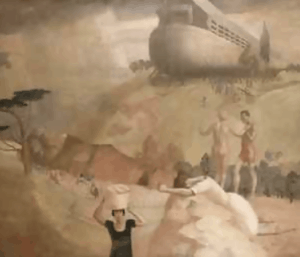
Arthur Outlaw was an English painter in the 20th century. This piece, named The Deluge, is his most famous painting and was actually assignment-based. For the 1920 Rome Scholarship, four artists including Winifred Knights, Leon Underwood, and James Wilkie alongside Outlaw asked students to paint a scene of the Deluge. Outlaw’s entry was displayed in London at the Royal Academy in early 1921.
Outlaw actually won multiple prizes while he was a student at the Slade. He specifically got a lot of attention for his portraiture and figure painting.
5. Cornelis Troost
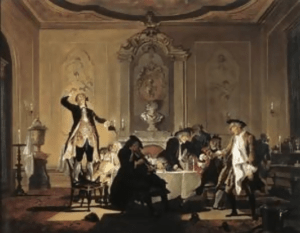
Cornelis Troost was not only a painter but an actor from Amsterdam as well. While he was trained as an actor rather than a painter, he gave up his career on the stage to pursue his career as a painter in 1723. He lived during the 18th century, so he wasn’t a part of the surrealist movement directly but he is one of the notable precursors to the period.
As an actor, many of his masterpieces were inspired by the Amsterdam Theatre. Many of his paintings had a portrait inspiration with himself and his fellow actors playing the models. Since his models were actors, this led to a lot of dramatic scenes such as the painting above: Rumor Erat In Casa (There Was a Commotion In the House), 1740.
Conclusion
With a movement that was so focused on creativity as much as, if not more, than it was on skill, the artist on the other side of the canvas is an important part of analysis. These are some of Europe’s most famous Surrealist hands but they only make up part of the picture. Continuing to explore different artists is a great way to find masterpieces that you’ll fall in love with










